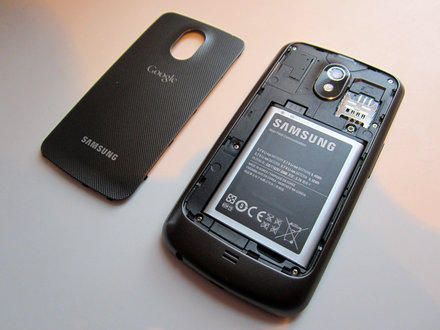Handset Manufacturers: Who are we kidding with the anemic smartphone batteries?


Yesterday, I took the plunge and used up one of my line upgrades on my Verizon Wireless account on a Samsung Galaxy Nexus. My wife, who dutifully went to the store yesterday to pick it up for me when I was away on a business trip got my current Droid Bionic in trade.
I've only been playing with the Nexus for a few hours, and I happen to think it is a great phone, but it is yet again another of the latest crop of smartphones that all have the same exact problem: an anemic battery, with a whole 1850 milliampere-hours (mAh) to keep this hungry 4G phone with a super-bright AMOLED HD display running all day.
This has been going on for years, ever since I started using smartphones with my original Blackberry Bold 9000. If you want a whole day of uninterrupted use without having to top off your charge, you need to go buy an extended battery instead.
The ones that come with the phones just aren't good enough, and I'm including Apple with their ridiculous sealed battery compartments in this complaint too. A whole 1400 mAh to run the iPhone 4S for a full day of use? Seriously?
And Motorola, just what the hell were you thinking when you designed an ultra-thin 4G Android phone with a sealed battery compartment with the Droid Razr? That's like building a Lamborghini with a 4 gallon gas tank. It's not going to go very far.
A whole industry of smartphone accessories from 3rd party battery manufacturers has cropped up in order to deal with this problem. SEIDIO Innocell is one of the more well-known companies and they produce huge Lithium Ions for most of the major brands and carriers .
For example, the ones that they produce for the newer 4G phones are in the 2800-3500 mAh range. These are all pretty much guaranteed to keep a phone running in 4G mode running for an entire 8 hour business day with moderate usage.
And if you drop your phone down to 3G and only turn the GPS services and the email sync on when you need them, you can keep it running around 16 to 20 hours with one of these batteries.
Still, I don't understand why we need to have default anemic batteries in the first place. I understand the desire for manufacturers to keep handsets thin, but let's face it, this is getting ridiculous.
A lot of this has to do with Apple driving the industrial design ethos that everyone is now competing with, but I find that Apple-envy ideology in order to attract customers when it comes to phones a bit nuts.
I mean, the entire auto industry doesn't try to make all cars look like Ferraris. So why should every smartphone strive to be ultra-thin? How can you reasonably expect a day of life out of a 4G, let alone a 3G phone with heavy usage with a battery with less than say, 2500 mAh?
This is doubly infuriating because the first thing that I do when I buy a new phone is want to put in a bigger battery. In the case of the Galaxy Nexus, Verizon offers a Samsung OEM 2100 mAh battery to replace the default 1850 mAh one.
That's what, a whole 250 mAh improvement? Why isn't that the default battery in the first place?
After you've bought your extended battery, you now have to figure out how to get it into a protective case. This is even more of a problem, because companies like OtterBox (my case vendor of choice) only design their cases for the default battery, not for 3rd-party batteries, or even the extended OEM batteries offered from the carrier.
I also went through this issue on my Droid Bionic -- Motorola offers its own extended battery, the 2760 mAh BW8X. But good luck finding any 3rd-party case that fits it.
Until battery chemistry improves to allow thinner batteries to hold a much larger charge, the only solution to battery anemia is for the handset OEMs and the carriers to finally face up to the facts that trying to sell a thin phone with a battery that isn't up to the task is doing a huge disservice to the customer.
And that may very well mean sacrificing the "I want to be like Apple" ethos and giving us bigger batteries and somewhat thicker phones by default.
Has your phone's default anemic battery driven you into extended 3rd-party battery products? Talk Back and Let Me Know.